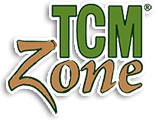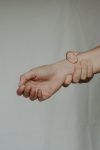Healing Peripheral Neuropathy with Traditional Chinese Medicine

By Xiyuan “Alex” Qiu, L.Ac.
Peripheral Neuropathy, a condition that affects millions of people worldwide, is often challenging to treat through Western medicine alone. Acupuncturists and herbalists can play a pivotal role in helping patients find relief and manage their symptoms effectively. In this blog, we will explore how Traditional Chinese Medicine (TCM) can offer valuable insights and treatments for Peripheral Neuropathy. We will focus on acupuncture points and herbs that can be particularly helpful in addressing this condition.
Understanding Peripheral Neuropathy
Peripheral Neuropathy refers to damage to the peripheral nerves, leading to a range of symptoms such as tingling, numbness, pain, and muscle weakness in the extremities. This condition can result from various causes, including diabetes, infections, toxins, and nerve compression, among others.
Traditional Chinese Medicine Approach
In TCM, the key to addressing Peripheral Neuropathy is to restore the balance of Qi (energy) and Blood, clear stagnation, and nourish the affected areas. Acupuncturists and herbalists can create personalized treatment plans based on the individual’s TCM pattern diagnosis. Here are some acupuncture points and herbs to consider:
Acupuncture Points for Peripheral Neuropathy
- Spleen 6 (SP6) Yin Lin Quan: Known as the “Three Yin Intersection,” SP6 is an essential point for harmonizing the Spleen, Liver, and Kidney energies. It can alleviate numbness and tingling in the lower limbs.
- Liver 3 (LV3) Tai Chong: This point “Great Rushing” helps to regulate the Liver and improve the flow of Qi. It is particularly useful for pain and discomfort in the extremities.
- Gallbladder 34 (GB34) Yang Lin Quan: GB34, also called “Yanglingquan,” is valuable for addressing muscle weakness and atrophy associated with neuropathy.
- Bladder 60 (BL60) Kun Lun: BL60 “Kunlun Mountain” is beneficial for relieving pain and numbness in the lower extremities. It’s often used in combination with other points for a more comprehensive approach.
Herbs for Peripheral Neuropathy
-
- Shen Tong Zhu Yu Tang: This formula combines herbs like Dang Gui (Chinese Angelica Root) and Chuan Xiong (Ligusticum) to invigorate Blood circulation and dispel stasis, reducing pain and discomfort.
- Bu Yang Huan Wu Tang: Known as the “Great Yang Restoration Decoction,” this formula incorporates herbs like Huang Qi (Astragalus) and Dang Gui (Chinese Angelica Root) to tonify Qi, strengthen the lower extremities, and promote the circulation of Blood.
- Shu Jin Huo Xue Tang: This formula, containing Chuan Xiong, Dang Gui, and Chuan Niu Xi, is useful for invigorating Blood and relieving discomfort.
Personalized Treatment
It’s essential to remember that each patient is unique, and their TCM pattern may vary. Tailor your treatment plan to address their specific pattern and symptoms, using a combination of acupuncture and herbal remedies.
Lifestyle Recommendations
In addition to acupuncture and herbs, encourage your patients to make lifestyle changes that can support their recovery. These may include dietary modifications, regular exercise, and stress management techniques.
As acupuncturists and herbalists, you have the tools and knowledge to provide much-needed relief to patients suffering from Peripheral Neuropathy. By understanding the underlying principles of Traditional Chinese Medicine and using acupuncture points and herbs tailored to the individual’s pattern, you can significantly improve their quality of life. Remember that a holistic approach, combining TCM with lifestyle adjustments, can lead to more effective results. Your expertise in TCM can offer new hope and relief to patients who have exhausted other treatment options.


